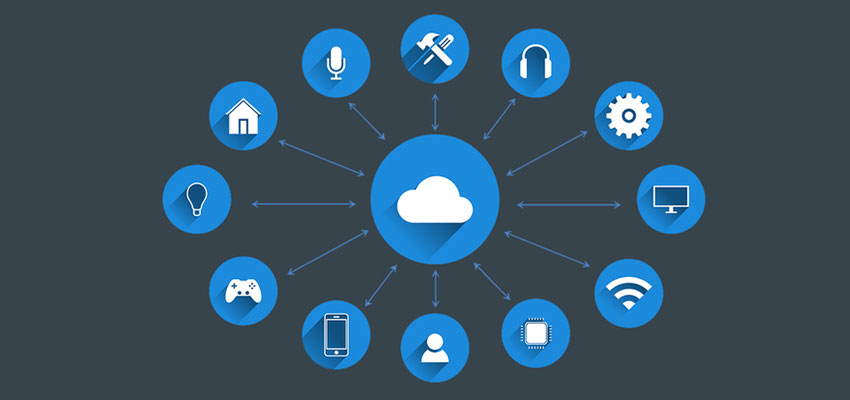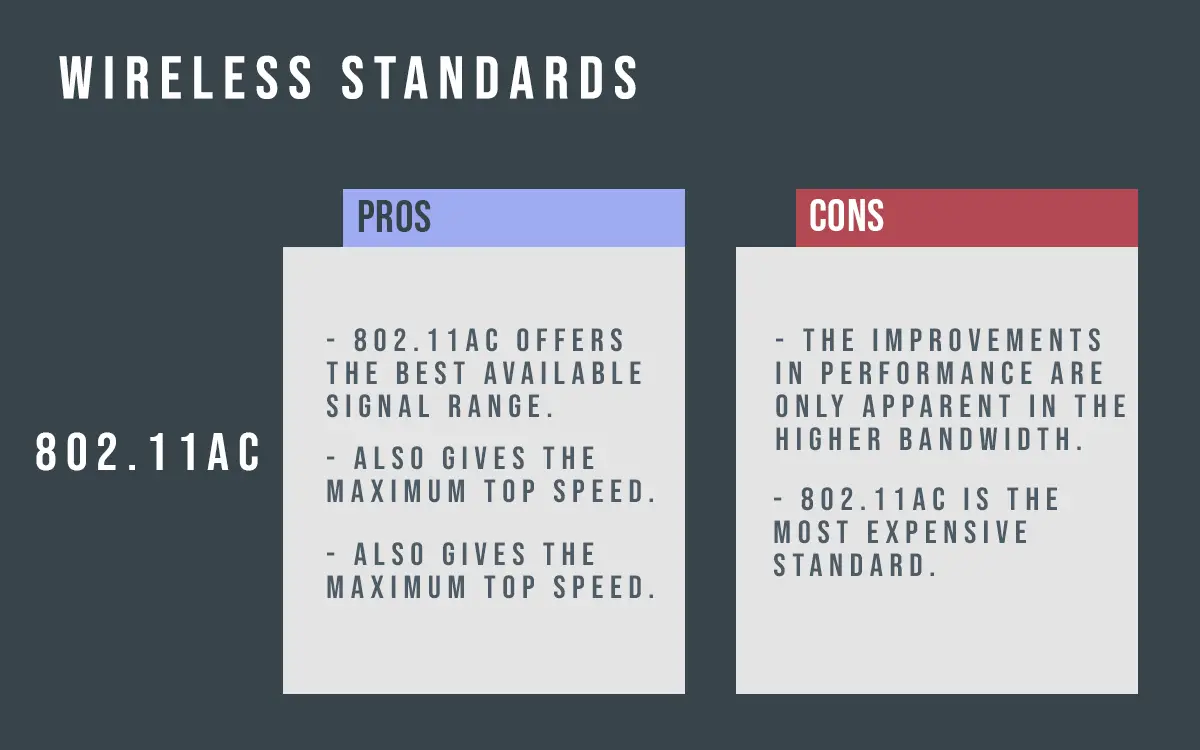
802.11 Standards Explained.
Posted March 17, 2020, 1:54 a.m. by Emil S.The majority of computer users are familiar with the term Wi-Fi. For most, it just refers to wireless access to devices that are connected to the internet. The term belongs to the Wi-Fi Alliance, whose role is to police the wireless world and to make sure that Wi-Fi-enabled products meet specific standards. The standards for wireless technology were laid down by the Institute of Electrical and Electronics Engineers (IEEE), and are referred to as the 802.11 wireless standards.
The standards were first established during the 1990s and are continuing to expand. New updates to the standards are being introduced regularly, and keep track of improvements to wireless technology and the introduction of new frequencies and new technologies.
The Wi-Fi Alliance has tried to make the naming of the standards easier to understand for the layman. The Alliance has introduced new names, for example, renaming 802.11ax as Wi-Fi 6, 802.11ac as Wi-Fi 5, and so on. However, they have not renamed all the 802.11 standards, so it is still necessary to be familiar with them all. The Wi-Fi Alliances new names have not caught on. The IEEE has not adopted them, so it is quite likely that they will remain obscure and unpopular.
The IEEE uses the traditional names, so that's another reason to become acquainted with them. Be warned, though, as the following descriptions are highly technical.

802.11aj
At the time of writing, this is the standard most recently approved. This was achieved in May 2018.
802.11aj also is known as China Millimeter Wave and exists to define modifications to 802.11ad. In practice, it is a rebranded version of 802.11ad. It is used in China, hence the name.
802.11ah
802.11ah is also called Wi-Fi Halow and covers the operation of those networks that are banded below 1GHz. In the United States, this covers 908-928 MHz, although there are variations to this in other countries. The purpose of this standard is to establish extended-range extended-range Wi-fi Networks. As it operates at a lower frequency, a greater range can be achieved. Data speeds will be faster, and the energy consumption is more economical. It is seen as a competitor for Bluetooth in devices in the home. This protocol dates from May 2017.
802.11ad
Dating from the end of 2012, 802.11ad is fast, providing a data rate of 6.7Gbps on the 60GHz frequency. However, the downside is, this can only be achieved over a very short distance – just 11 feet.
802.11ac (also called Wi-Fi 5)
Almost all home wireless routers will be 802.11ac compliant. This standard operates in both the 2.4GHz and the 5GHz frequency sectors using dual-band wireless technology. 802.11ac has backward compatibility with 802.11b, 802.11g, and 802.11n with a bandwidth of 1300Mbps on 5GHz and 450 Mbps on 2.4GHz. The majority of home wireless routers use this standard.
Pros
- 802.11ac offers the best available signal range.
- 802.11ac also gives the maximum top speed.
- It is as good as the most common wired connections
Cons
- The improvements in performance are only apparent in the higher bandwidth.
- 802.11ac is the most expensive standard.
802.11n (also called Wi-Fi 4)
802.11n was first approved in October of 2009. It is occasionally referred to as Wireless N. It was created as an improvement on 802.11g. Therefore it can provide some 300 Mbps of bandwidth using Multiple Input, Multiple Output (MIMO) technology. The intensity of the signal is also much improved, and this gives a better range. It also has backward compatibility with both 802.11b and 802.11g equipment.
Pros
- 802.11n gives a noticeably improved bandwidth compared with previous standards.
- It is supported by a broader range of devices and other equipment.
Cons
- 802.11n uses multiple signals, which might cause interference to any 802.11b and 902.11g networks that are close.
- It is more costly to install than 802.11g.
802.11g
First approved for use in June 2003, this standard succeeded 802.11b. It can manage 54Mbps and operates in the 2.4GHz band, so it has a wider range. It matches 802.11a for speed but at a lower frequency. 802.11g aimed to combine the best of both 802.11a and 802.11b. 802.11g has
backward compatibility with 802.11b allowing it to work with network adapters using 802.11b.
Pros
- It is the least expensive option
- It is supported by almost all network equipment and wireless devices currently available.
Cons
- 802.11g is the slowest as well as the oldest standard still in widespread use.
- A whole network will slow down to match the speed of any 802.11b devices connected to it.
802.11j
Introduced in 2004, 802.11j enhances 5GHz signals to comply with Japanese regulations.
802.11h
802.11h is an adapted version of 802.11a that meets the regulatory requirements in Europe. It was introduced in 2003.
802.11a
Confusion reigned in the marketplace at first, as the majority of people expected that a standard with a "b" suffix would be compatible with the standard that had "a" at the end. As the two use different frequencies, they are incompatible.
The two standards were created simultaneously, although the "b"; version was introduced first. 802.11a can achieve data rates of up to 54Mbps in the 5GHz frequency. 802.11a is more expensive and so tends to be found mostly on business networks. 802.11a supports a regulated radio frequency, whereas 802.11b uses an unregulated frequency. Using a higher frequency means a smaller range and more difficulty getting a signal through obstructions like walls.
802.11b
This standard was approved in July 1999 and introduced in September 1999 and improved on the original 802.11 standards. The data rate is 11Mbps, and it operates in the 2.4GHz frequency. Most early home routers were 802.11b.
802.11b uses an unregulated radio frequency, which creates the problem of interference. Any appliance that uses the same 2.4GHz frequency, such as a cordless phone or a microwave oven, can cause interference. Care must be taken when positioning these appliances to keep them at a distance from devices that use 802.11b.
802.11-1997
802.11-1997 is the original standard from 1997. Users got a data rate of 2Mbps in the 2.4GHz frequency. The range, however, was 66 feet indoors.
Wi-Fi standards pending
The following standards are all waiting to be introduced or have just been approved.
802.11ak
Certain home entertainment products have 802.11 wireless compliancy and also an 802.3 Ethernet capability. This standard aims to assist 802.11 media devices to operate within 802.1q bridged networks.
802.11ax (Also known as Wi-Fi 6)
Wireless Local Area Networks (WLAN) that operate where wireless traffic is dense often struggle to maintain peak performance. Such a problem might occur in places like airports or sporting venues. 802.11ax is additionally known as High-Efficiency WLAN, as it aims to improve the performance of a LAN in these circumstances.
802.11ay
This standard carries the additional title Next Generation 60GHz. It aims to push up the data rate of 802.11ad from 7Gbps to 20Gbps. Improved reliability and range are also promised.
802.11az
Also called Next Generation Positioning (NGP), this standard is concerned with improving the ability of a device to ascertain its exact position. Also to enable reduced power consumption. It will be scalable for areas where wireless traffic is particularly dense. Work is continuing on the development of 802.11az, and approval is not expected until 2021.
802.11ba
"Wake-Up Radio" (WUR) is the alternative name for 802.11ba. This new technology will work in an Internet of Things network. The aim is to extend battery life in a range of devices but, at the same time, maintain optimum performance. Approval is expected this year. In addition to those standards listed above, there are other specific standards—for example, 802.11i, which relates to security concerns.
Bluetooth and WiMax
The standards listed above are all part of the 802.11 families. Other related technologies need to be mentioned.
Bluetooth
The development of Bluetooth took place at the same time as the 802.11 standards but took a different path. It was designed to be used by network devices with low-power requirements. The bandwidth is 1-3Mbps and only works over a limited range of up to about 10 meters.
The hardware that incorporates Bluetooth can be made at a low cost, and that has appealed to manufacturers in this sector.
WiMax
WiMax was developed independently from Wi-Fi. It was created specifically for long-range networking (over miles) rather than local area wireless networking.
